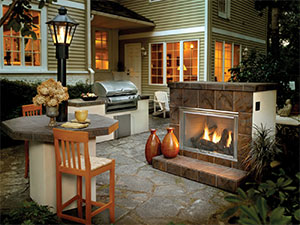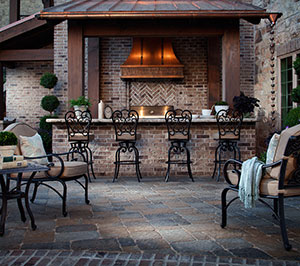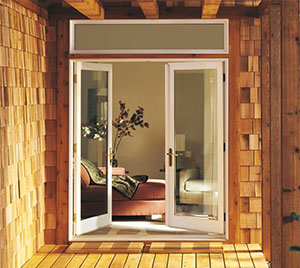Creating the Ultimate Outdoor Living Space
By Lauren Busser The House Designers Editorial Director
Outdoor living spaces have been a growing trend over the years and they may be anything from a simple sitting area where you can enjoy a garden of freshly planted flowers to a fully outfitted outdoor kitchen to help you entertain guests. Here's an overview of how you can design and build an outdoor space to fit your lifestyle.
Decide What You Will Use the Space For
First you need to decide just how you'll use this outdoor living area as this will determine not only the design but also the size of your space. Take some time and sketch out your ideas. When you’re happy with your design you can begin to choose the materials which will work best in that space.
If you envision barbecuing and entertaining guests then you will need a space large enough to accommodate furniture and maybe a grill or some appliances. On the other hand, you might desire a simple little nook for tending flowers and herbs which will occupy only a few square feet.
This patio features the
Dakota Outdoor Fireplace by
Heat & Glo™. This setup is a great place to relax with cool drinks on a warm night. Light the grill and let the entertainment begin.
Select Your Building Materials
There is a wide variety of building materials available for your outdoor living space, from pavers to tile to natural stone. Each material has its own unique properties which may lead you to choose one over another.
Brick is an extremely popular choice, in part because it’s now available in a rainbow of colors. If your home is located in an area with widely varying temperatures you will want to make sure that you use patio brick instead of structural brick because it is less porous.
Pavers are another excellent, economical choice when it comes to a patio material. Typically these are made from concrete or clay and come in various sizes, colors and shapes. They are also widely available, relatively inexpensive and installation is simple and straightforward.
Take your outdoor space back in time with
Belgard® Pavers. Pictured here are
Mega-Bergerac® pavers which offer a hand-cobbled appearance with trademark dimpled surface and unique color blends.
Or choose stone and tile. A stone patio is environmentally friendly and gives a luxurious natural look with an interesting, somewhat uneven surface. Tile is beautiful but may become slippery when wet, which may or may not be a concern in your application.
Consider the Landscape
Take into consideration the topographical landscape that your patio will occupy and try to work with the natural layout of your space. For example, if you start laying down pavers at your home's entryway and they end abruptly next to the patio tiles, it may look awkward. You can prevent this by using materials like gravel or mulch to help graduate the transition from one design element to the next.
Softening the edges and borders of the patio can also bring you closer to nature. Instead of a fence, consider putting in a trellis as a way of encouraging flowering vines to climb and grow. If you desire a more opaque border, placing the trellis slats closer together will encourage denser growth for better privacy.
Speaking of which, consider your desired level of privacy. If you have limited backyard space bordering nearby properties, this is something to plan for carefully. There are plenty of ways to create an attractive partition including fences, tall shrubs, trees, a hedge row or even bamboo.
Done right, your new patio will be a place you’ll really enjoy and designing and building it can be fun. Consult your builder if you have any questions regarding the design or construction of your patio.




.png)
.png)





